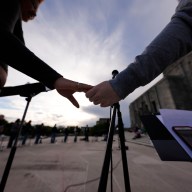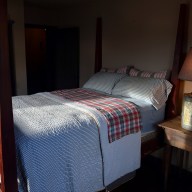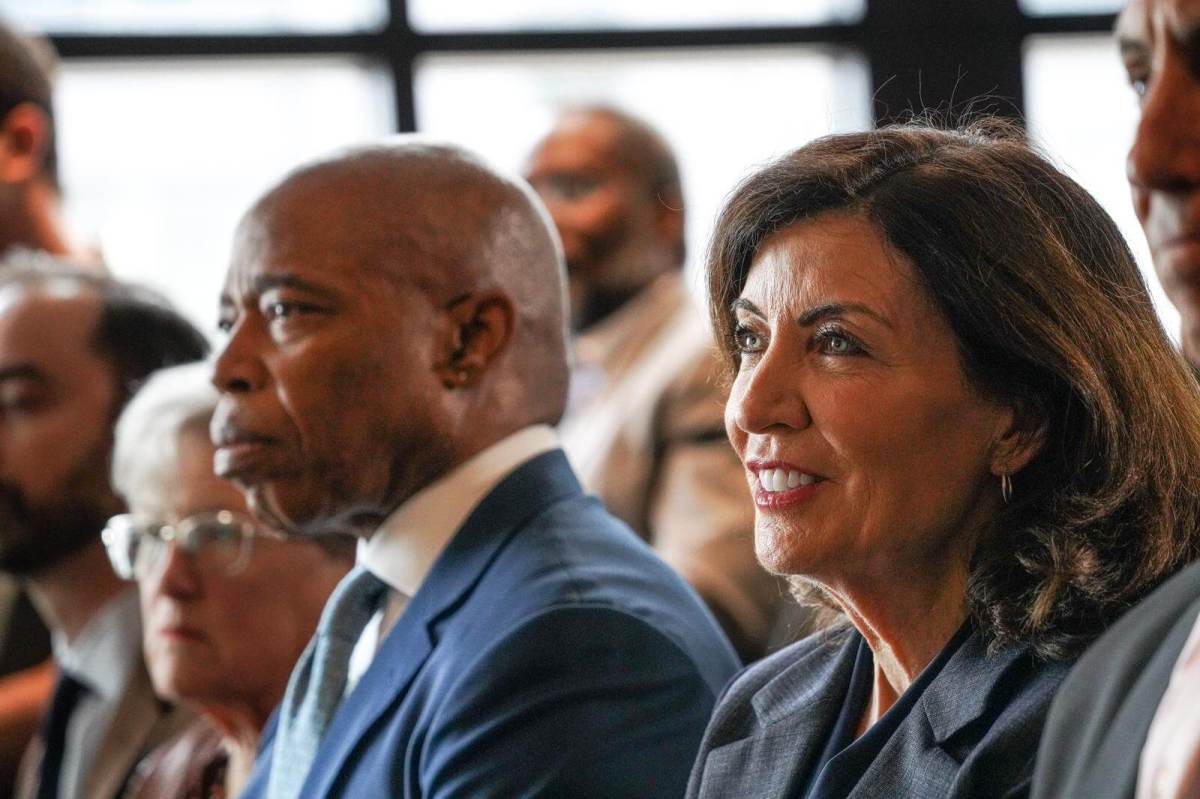LONDON – Whenever the passport control officer at London’s Heathrow airport asks why I’ve come to England, I always say: “To see my tailor, at Savile Row.”
It’s not true, unfortunately, but it sounds great. Sean Connery used a similar line about Savile Row in Dr. No, his first outing as 007.
For more than two centuries, this small street in London’s exclusive Mayfair neighbourhood has produced wonderful, handmade clothes for an elite group that favoured discreet, understated suits to make the wearer blend in, not stand out.
But these days, Savile Row tailors are out to make a splash – even branching out into the glitz of London Fashion Week, with a presentation by E. Tautz Wednesday designed to showcase the venerable brand’s contemporary take on the old-style English military and sporting look.
The street has been invigorated by the arrival in recent years of Richard James, Ozwald Boateng and others who have made the world-famous Row more youthful and more trendy – witness the psychedelic ties and rainbow-colored socks in James’ shop window and the burgundy and emerald shirts sold by Boateng.
That’s fine but can clubby Savile Row tailors really survive in the Age of Bling?
Can they cope when older, suit-wearing customers retire to the countryside, replaced by a younger generation that never learned how to tie a Windsor knot?
And how do they weather a recession when a custom-made suit starts at about 3,000 pounds ($4,800) and quickly shoots into the stratosphere?
Mark Henderson, chairman of the Savile Row Bespoke Association, said sales are generally holding up despite the downturn.
“We have the same number of people buying suits, but they are buying fewer, say two at a time rather than six at a time,” he said. “Over the past 10 years our bespoke and made-to-measure suits have shown consistent growth.”
It’s easy to be overwhelmed by history on Savile Row. Winston Churchill and other legendary figures got their suits made here, and the Beatles played their final performance on the rooftop of 3 Saville Row. But history alone won’t pay the bills.
To keep the tradition going, stores have had to become much more welcoming. In the fusty old days Savile Row shops tended to be dark and uninviting, and people who wandered in would often get a frosty reception, or be ignored altogether, unless they seemed to have the right pedigree.
“We were the catalysts for change,” said James, who opened his first Savile Row shop 17 years ago and has since expanded into two large stores, both light-filled and inviting to outsiders.
“When we got here, it was a street of excellence, but you wouldn’t have known it because it was very fuddy-duddy. It was a street of people selling beautiful clothes to older gentlemen, it wasn’t somewhere where young people went. We came in and did it a different way. Our store was clean and open and modern and bright. And it wasn’t intimidating.”
In the more established shops, he said, customers were greeted by an older man with a tape measure around his neck. In contrast, he said, people who wandered into James’ shop were met by a fashionable young salesman well versed in Italian fashion trends.
Managing director Sean Dixon said that James and other designers have faced tough business conditions in the last year but that the demand for bespoke suits has continued even as other luxury items, like high-end watches and pricey champagnes, have faltered.
“It’s really hard to know why because 3,000 pound suits are really expensive,” he said. “But if you are into bespoke and you understand it, in fact it’s kind of value for money. You’re actually better off spending that sort of money on a bespoke suit when you can easily spend 3,000 or 4,000 pounds on an off-the-peg suit that doesn’t have your own individual input.”
He believes the experience of having a bespoke suit made is, for men, a form of escapism that provides pleasure despite hard times.
If so, it’s not a case of instant gratification. It can often take three months, and several fittings, for a new suit to be made from scratch for a new customer, who plays an active role in choosing all of the suit’s details, including the lining, lapel shape, and buttons.
Savile Row’s offerings have been expanded to widen the customer base, with most designers offering not only custom-made suits but also ready-to-wear suits typically starting at about 600 pounds and a middle-range suit that involves more personal tailoring for about 250 pounds more.
Top-of-the-range suits are still in demand, with some extravagant shoppers ready to part with 15,000 pounds or more for suits made with “record bale production” wool seen by some as the world’s best.
It’s handled so carefully that shoppers are told who owns the individual sheep that produced the precious wool – though few, if any, opt to visit the sheep at home in New Zealand or Australia.
Shops may be seeking a more youthful crowd, but the way of doing business on Savile Row has changed little since Churchill’s time, said Patrick Grant, director of Norton&Sons, which specializes in bespoke suits, and E. Tautz, which offers ready-to-wear items.
“I’ve been here four years and I’ve seen our business grow,” said Grant. “Men enjoy buying clothes from us. They enjoy finding something that works, coming back to a place where people know them. Being able to sit and shop quietly. It’s a very civilized way to buy clothes.”
One thing has changed though. Grant said Savile Row tailors would no longer provide open-ended credit as they did when Churchill was a young man preparing for a career in military service.
“He came to Tautz as a 21-year-old two weeks before he took a commission in the Cavalry, and some of those bills were still outstanding 14 years later,” he said. “Those days are gone.”
















